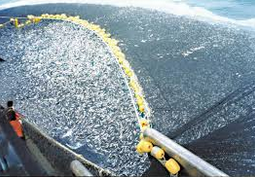The Wonders of Fishing Practises!
Do you want to learn more knowledge about the different types of fishing practises fishermen and locals use to catch kaimoana? Well, you have come to right place.
Dredging! Dredging is steel nets that are dragged across the ocean floor picking up or collecting scallops and oysters. Some fishermen forget that although dredging collects scallops and oysters. It also scrapes the ocean floor, which ruins marine habitats and releases all the silt which makes the water dirty. To stop this from happening, the net could be put on wheels which are still dragged through the water, but are not ruining the ocean floor.
Another fishing practise is Gillnetting. Gillnetting is a net which floats in the water with the help of floats and weights. The net can sink to the sea floor, or can float to the surface. The netting is almost invisible, so the creatures swim right into the trap. Salmon, sardines and cod are the main fish gill netting is supposed to catch. But, other fish like sea turtles and sharks can get tangled in the net and die. To stop this from happening, the net could be more visible so that when the wrong fish swims by, it could swim above, below or around the net! Click the link below for a short video about Gillnetting!
The next fishing practise is Trawling. Trawling is a big net being pulled through the water behind a boat or two. The net that is used for trawling is called “trawl.” Precious sea creatures like shrimp, shellfish, cod and many other sea creatures are caught by a trawl. A trawl has an open end and a closed end. The open end is the mouth and the closed end is the tail.

Long Lining! Long lining is a long line stretched through the water. On the longline is a net pattern which traps fish and other things. Longlining effects the sea process by accidentally catching things it wasn’t meant to catch. To stop this from happening, the person or people longlining could fish where there is more of what they are fishing for and less of what they aren’t fishing for.
The four fishing practises we chose to write about are common techniques, which were used long ago and today. Did you know that 82% of our planet love fishing, not just for the yummy food the catch, but for the fun that is made out of it!
It is really cool to see you gaining more control over your writing style to suit the purpose and audience. You are using vocabulary that is appropriate and you are using different sentence lengths for effect. I also notice that your punctuation is being used consistently well. I liked the way you added images to support your writing. Keep up the amazing writing, Caprice!
ReplyDelete